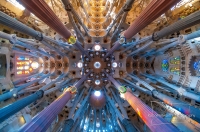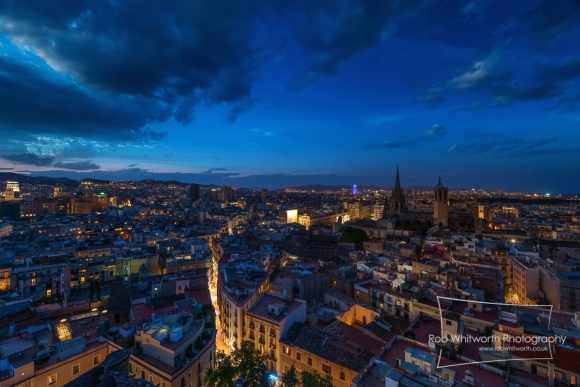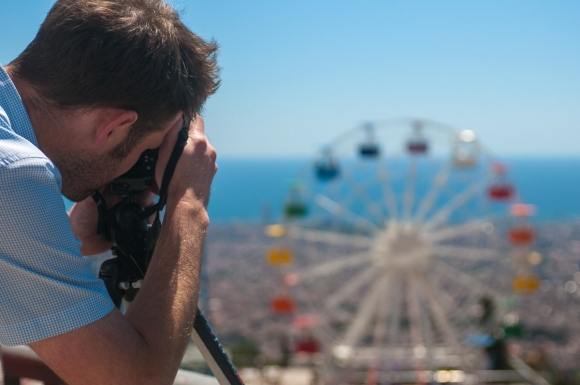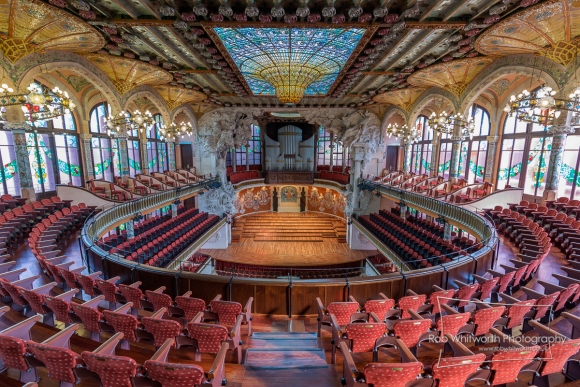This epic stop motion hyperlapse journey through Barcelona, Spain took over 360 hours in the making
posted Friday, July 18, 2014 at 3:30 PM EST

"In few other cities is it possible to walk from spectacular location to spectacular location," writes photographer Rob Whitworth as an introducion to his video "Barcelona GO!" on Vimeo. And few other videos we've seen so far take us as spectacularly from location to location as this one.
Even if you're unfamiliar with most of the particular sites of Barcelona, the capital of the Spanish autonomous community of Catalonia, the name "Sagrada Familia" will surely ring a bell. It's the city's famous basilica built by artist Antoni Gaudí, which he worked on for almost 40 years and never finished during his lifetime.
To this day, the "Holy Family" -- the city's chief and most famous attraction and UNESCO world heritage site -- remains unfinished, but is schedule to be completed by 2026, which would mark Gaudí's centenary of death. But besides this magnificent church, the city of Barcelona has much, much more to see.

Rob Whitworth's video "Barcelona GO!" takes us to many of the city's sites, including the National Art Museum of Catalonia, the opera house, the Museu d'Història and the Palau de la Música Catalana, the city's magnificent concert hall. It takes us through the narrow streets of Barcelona, into the city's nightlife, on a 1.3 km ride with the Telefèric del Port, one of the city's two cable cars, and to many other places.
The video was made for the Catalan Tourism Board, and Rob Whitworth was one of five photographer commissioned with creating videos that showcase different parts of Catalonia.
"Working with them was fantastic, essentially I had the keys to the city," Rob recalls. Which is why we get to see so many spectacular views in this video.
"The idea behind the video was to give people a taste of Barcelona, the sights, sounds and key locations. I've made quite a few city videos now and every city is unique," Rob tells us via email. So without further ado, here is Rob's unique "flow-motion" (as he calls it) video of Barcelona. If you're interested in learning how it was created, read on past the video.
After watching the video above, we're sure you're curious to learn how Rob achieved all this, just as we were when we first saw it. Lucky for you, Rob was so kind as to tell us a little about the creation of the video, the creative process as well as the technique and gear involved in its making.
The most pressing question many of us have after watching the video probably is, "how long did it take to make it?" According to Rob, the total time spent on "Barcelona GO!" is 363 hours, with the majority of that -- 179 hours -- dedicated to post production. 31 hours were spent on scouting and location finding, 75 hours on logistics and travel, and 78 hours on the actual shooting.
"Storyboarding took a couple of days and was pretty crazy as some of the tricks had not been fully tested, so I was booking locations and shooting whilst not 100% [sure] that it would all work. Lots of fun," Rob tells us. "Shooting was carried out over around ten days and then the post [production] starts."

The result of these 78 hours of shooting were a total of 26,014 raw files, which amounted to a whopping 817 gigabytes of data. These were taken with a small army of Nikon DSLRs, including a D800 and a D3200, equipped with Nikkor lenses ranging from the 10.5mm f/2.8G DX fisheye to the 70-200mm f/2.8G telephoto zoom.
Now here's the interesting part: during the whole creation process, Rob used no motion control devices of any kind -- even though the video has you believe he did. The only extra equipment, besides the camera bodies and lenses, were some tripods and a remote camera control.
As for the details of the technique behind "Barcelona GO!," Rob says that "there are a bunch of tricks in there, some quite common like hyperlapse and some new. Lots of work in post production and experimenting with different ideas." For his post production workflow, Rob used softwares such as LRTimelapse, Lightroom, and After Effects.

During the creation of the video, Robert says that he was given "pretty much total creative freedom which can be a blessing and a curse. A lot of responsibility. Launching city videos is terrifying. For a video to go viral people need to not only love it they need to identify with it and share it with people they care about. It amazes me. This time it went well."
Well, we're inclined to say it went a little more than well, considering the video has been watched over a million times in the first week that it's been up on Vimeo. But of course, it's not Rob alone who deserves all the credit.
"I'd also like to say the sound is something I'm very proud of. Slava Pogorelsky did an amazing job," he tells us. "Really brings it to life and uses the sound to enhance the visuals."
And then there are Ferran Macià Edo and his colleagues from the Agència Catalana de Turisme, without whom the video probably would never have seen the light of day. The whole series of promotional videos of Catalonia that the tourism board commissioned can be watched over at YouTube.
We'd like to thank Rob Whitworth for the information he provided to us as well as the permission to showcase some still images from the video in this article.